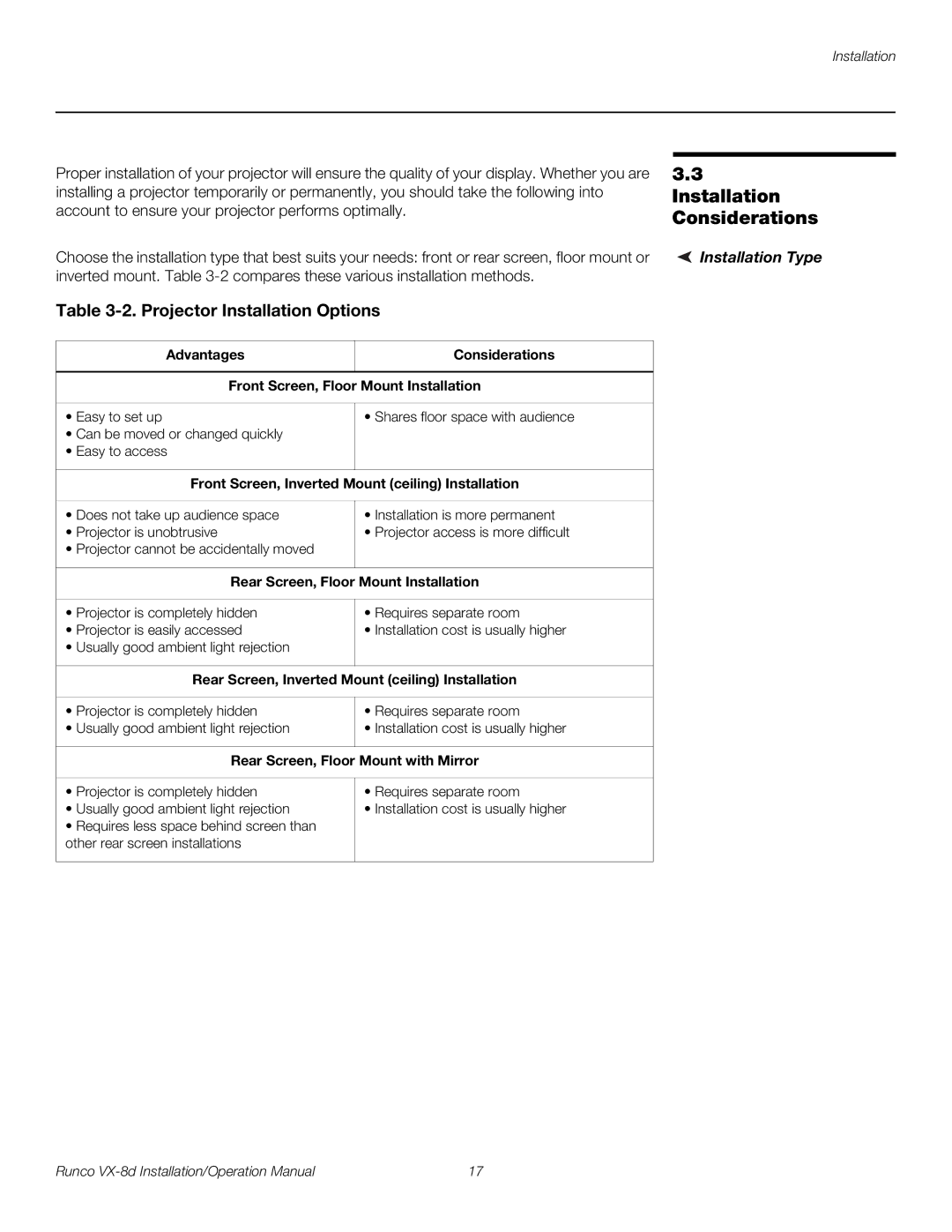Installation
Proper installation of your projector will ensure the quality of your display. Whether you are installing a projector temporarily or permanently, you should take the following into account to ensure your projector performs optimally.
Choose the installation type that best suits your needs: front or rear screen, floor mount or inverted mount. Table
Table 3-2. Projector Installation Options
Advantages | Considerations |
|
|
Front Screen, Floor Mount Installation | |
|
|
• Easy to set up | • Shares floor space with audience |
• Can be moved or changed quickly |
|
• Easy to access |
|
|
|
Front Screen, Inverted Mount (ceiling) Installation | |
|
|
• Does not take up audience space | • Installation is more permanent |
• Projector is unobtrusive | • Projector access is more difficult |
• Projector cannot be accidentally moved |
|
|
|
Rear Screen, Floor Mount Installation | |
|
|
• Projector is completely hidden | • Requires separate room |
• Projector is easily accessed | • Installation cost is usually higher |
• Usually good ambient light rejection |
|
|
|
Rear Screen, Inverted Mount (ceiling) Installation | |
|
|
• Projector is completely hidden | • Requires separate room |
• Usually good ambient light rejection | • Installation cost is usually higher |
|
|
Rear Screen, Floor Mount with Mirror | |
|
|
• Projector is completely hidden | • Requires separate room |
• Usually good ambient light rejection | • Installation cost is usually higher |
• Requires less space behind screen than |
|
other rear screen installations |
|
|
|
3.3 Installation Considerations
 Installation Type
Installation Type
Runco | 17 |
